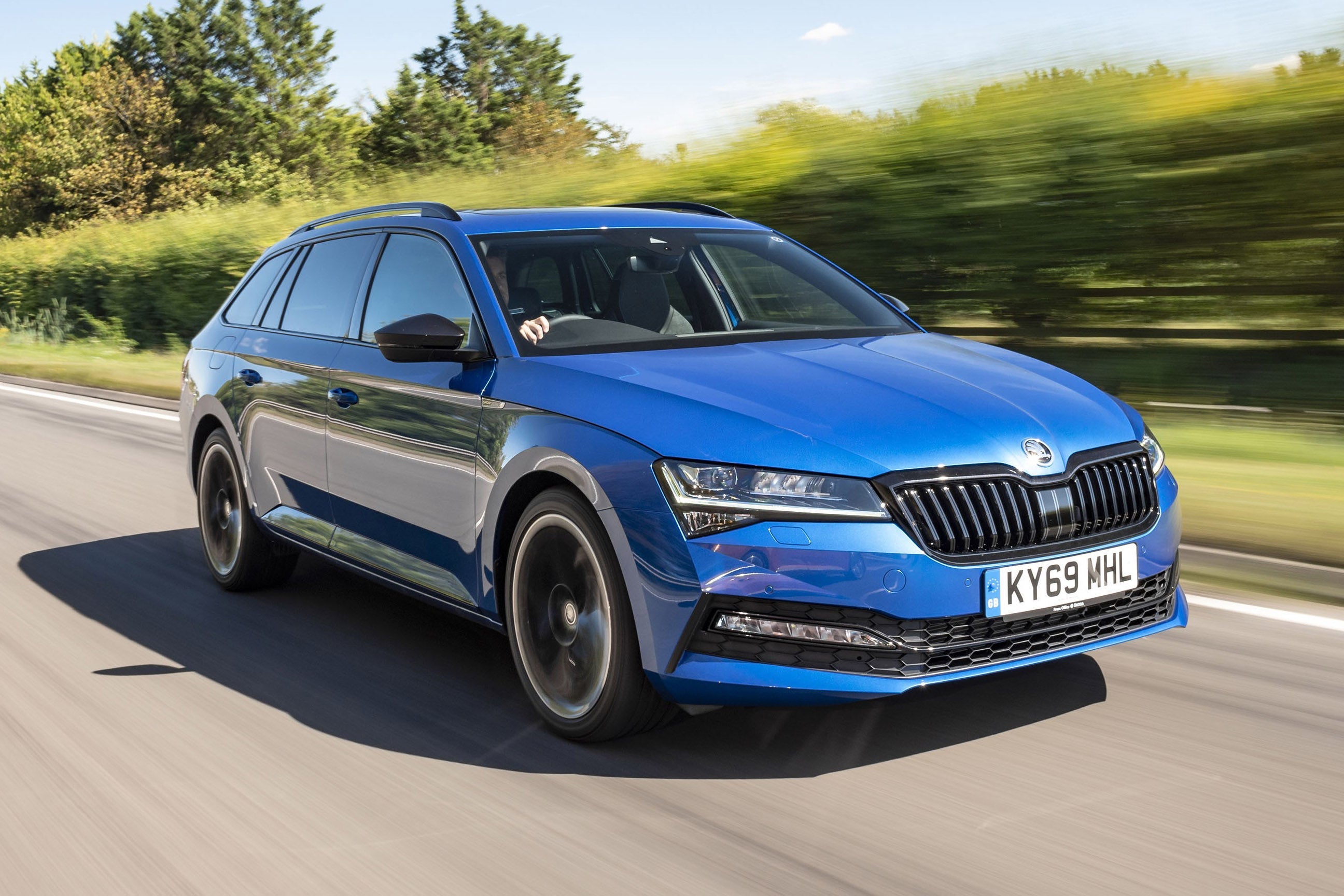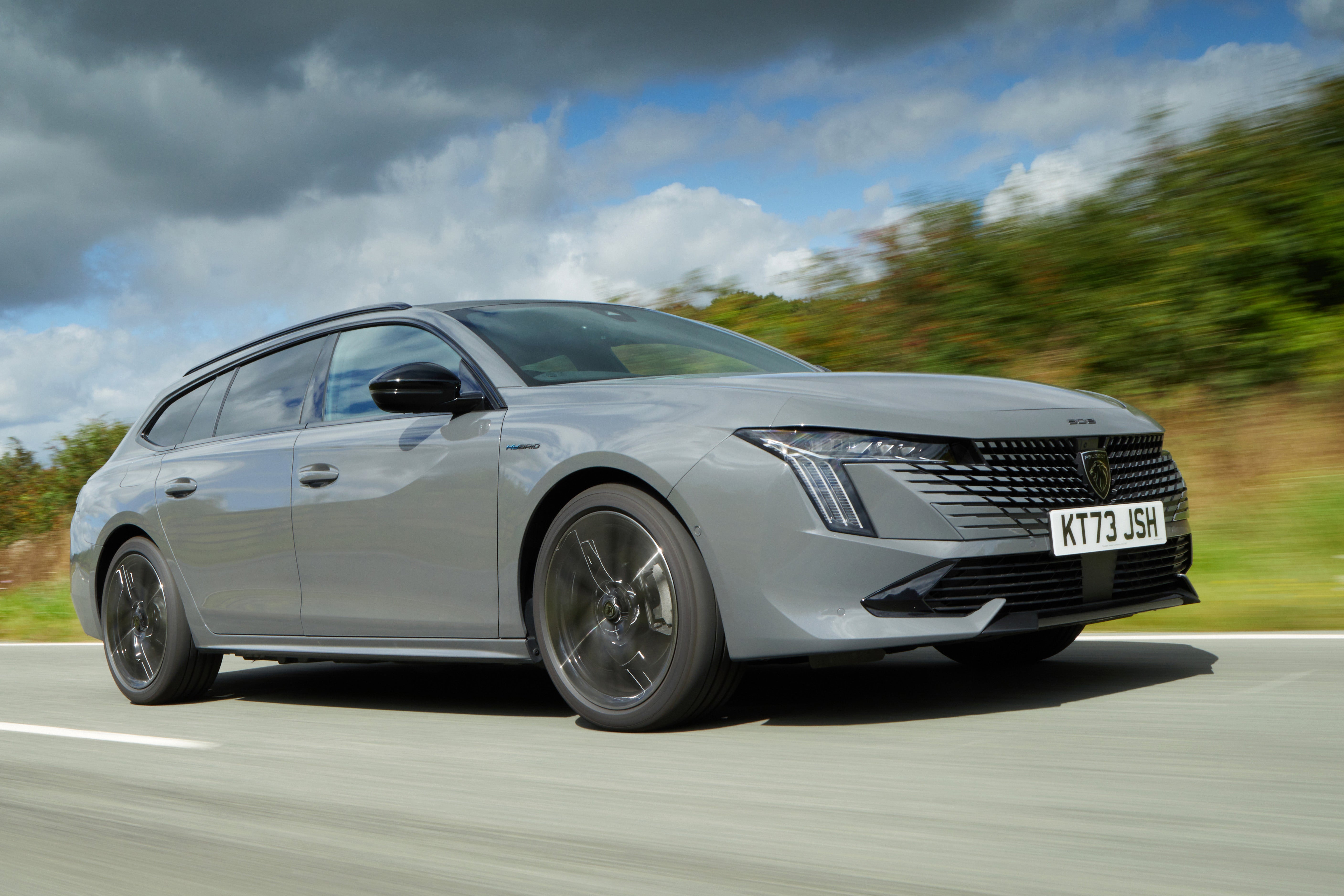
New Volkswagen Passat will take the popular large family car range further upmarket – and offered only as an estate
The new Volkswagen Passat is the latest model in a long-running line that stretches back to the 1970s. In that time, the Passat has built a reputation for reliability, practicality and dependability, something the all-new 2024 Volkswagen Passat aims to hone even further.
An estate car rival to the Skoda Superb, Peugeot 508 and Audi A4, the new Volkswagen Passat continues to offer a range of petrol, diesel, and plug-in hybrid engines. It will be more comfortable than ever, and feel more premium to drive.
The new Volkswagen Passat also has latest-generation interior tech, which VW hopes will see the new model build further on the 30 million Volkswagen Passat made to date.


New 2024 Volkswagen Passat price and release date
The new Volkswagen Passat is now open for configuring and ordering in the UK. Initially, it will be offered with a 1.5-litre TSI mild hybrid petrol engine. An eHybrid plug-in hybrid follows later in 2024.
New Volkswagen Passat prices start from £38,400. This is for a 1.5 TSI 150 Life version.
The new Volkswagen Passat is also offered in 1.5 TSI 150 Elegance grade, for £41,580, and a 1.5 TSI 150 R-Line, for £42,830.
All new Volkswagen Passat have a DSG automatic gearbox as standard.

New 2024 Volkswagen Passat: exterior and interior
The new Volkswagen Passat is a sleek, sophisticated evolution of today’s car, with crisper lines and more high-tech LED headlights. Volkswagen says the design is more sculptural and dynamic, with stylish details such as a bonnet that's lower in the middle than at the edges, where it wraps into the front wings.
The new Volkswagen Passat's LED headlights have narrow LED daytime running lights that flow into a central horizontal LED light bar.
Available as an option will be next-generation IQ.Light LED matrix headlights. Volkswagen says these have a high-performance main beam with a range of around 500 metres. The design of the lights is flatter and more modern-looking.
At the rear, the new Volkswagen Passat has a tailgate that opens deep into the rear bumper, for practicality. It will also have LED tail lights with a continuous horizontal LED strip connecting the clusters (and a posh inset chrome strip for a premium appearance). It’s larger overall too, measuring 140mm more than today’s car.
Notably, the new Volkswagen Passat is extremely aerodynamic, so it slips through the air on the motorway. With the best drag coefficient ever for a Volkswagen estate, the new Passat will be more efficient and economical as a result.
Inside the new Volkswagen Passat, the flat, horizontal instrument panel has a digital driver’s display and a large, freestanding central screen. This will be 12.9-inches as standard, and 15.0-inches as an option.
The new Volkswagen Passat will have backlit touch sliders below the main infotainment display, for interior temperature and audio volume. An optional head-up display will also be available.
The gearshifter – every new Volkswagen Passat is an automatic – has been relocated onto the steering column. The multi-function stalks have ergonomic buttons, as does the steering wheel – Volkswagen has ditched the touch-sensitive controls, following customer feedback.
The new Volkswagen Passat also has advanced, ultra-comfortable ergoActive seats, which area climate-controlled and have a built-in massaging function. They offer up to 14-way adjustment.
In terms of space, the new Volkswagen Passat is much larger than the current car. There is 50mm more rear legroom, and the boot has 40 litres more space, taking capacity up to 690 litres. With the rear seat folded, space grows by 140 litres to an enormous 1920 litres.
Those buying or leasing a new Volkswagen Passat will also notice a real lift in quality. It has new levels of fit and finish, plus premium-level refinement thanks to next-generation noise insulation.

New 2024 Volkswagen Passat: fuel economy and performance
The new Volkswagen Passat uses the VW MQB evo architecture. This is an evolution of today’s setup, and means the European line-up will offer a wide range of petrol, diesel, mild hybrid and plug-in hybrid engines – but not a fully electric version. The new Volkswagen ID.7 will instead play the EV role.
Already on sale in the UK is the 1.5-litre eTSI petrol engine, producing 150PS. This has cylinder deactivation, to boost fuel economy, along with mild hybrid technology. It averages up to 51.8mpg.
Arriving later in 2024, the new Volkswagen Passat eHybrid plug-in hybrid has much larger 19.3kWh battery. This will give a pure electric range of more than 62 miles between charges. It will be able to use 50kW DC rapid charger facilities, for faster top-ups on the move. It is paired with the 1.5-litre TSI engine and offers a choice of two electric motors – for overall system power of either 204PS or 272PS.
The new Volkswagen Passat may also be available with a 2.0-litre TSI offers 204PS in front-wheel drive guise, or 265PS with 4Motion all-wheel drive. All have a seven-speed DSG automatic gearbox.
The TDI turbodiesel engines are focused around the familiar 2.0-litre TDI. In standard guise, it produces 150PS, and 193PS with 4Motion all-wheel drive.
The chassis of the new Volkswagen Passat has been overhauled, with more direct steering and optional DCC Pro adaptive dampers. It also has a Vehicle Dynamics Manager for the first time. This centralises all the chassis settings in one module and is technology first seen on the sporty Volkswagen Golf GTI.

Can’t wait for a new Volkswagen Passat? Time to consider a Citroen C5 X…
An intriguing new alternative to a Volkswagen Passat estate is the Citroen C5 X. This offers a fastback bodystyle, a practical boot, plus a range of efficient turbo petrol engines and a plug-in hybrid. We think it’s a comfortable and likeable French oddity, with secondhand prices starting from just over £25,000.
If you're ready to buy we've got 1000s of Used Cars for Sale, while if you're looking to save money, check out our guide to the Best Car Deals.
Looking for more new car news?
Another new car we’re looking forward to here at heycar is the 2024 Dacia Spring. This is a small, affordable electric car with a sub-£20,000 price tag, so serves as a nice contrast to the beefy new Toyota Land Cruiser. But what if you still want a large seven-seat 4x4, despite a desire to go electric? You’re in luck – the 2023 Kia EV9 electric SUV is right up your street.
With increased rigidity, a redesigned four-link rear axle, modified anti-roll bars and dampers plus multiple other updates, engineers are confident the new Volkswagen Passat will be more satisfying to drive.
Since its launch in the early 1970s, more than 30 million Volkswagen Passat have been sold, over more than 50 years.
Even the standard Volkswagen Passat has a large 12.9-inch centre touchscreen. As an option, a huge 15.0-inch screen (that’s a whopping 38 cm) is available.
Car deals
Whether you're looking for a great PCP deal or looking for a car on 0% finance, we've got the car deal for you
Find your perfect used car
Whether you're looking for an automatic car, an SUV or even a campervan, we've got the used car for you




